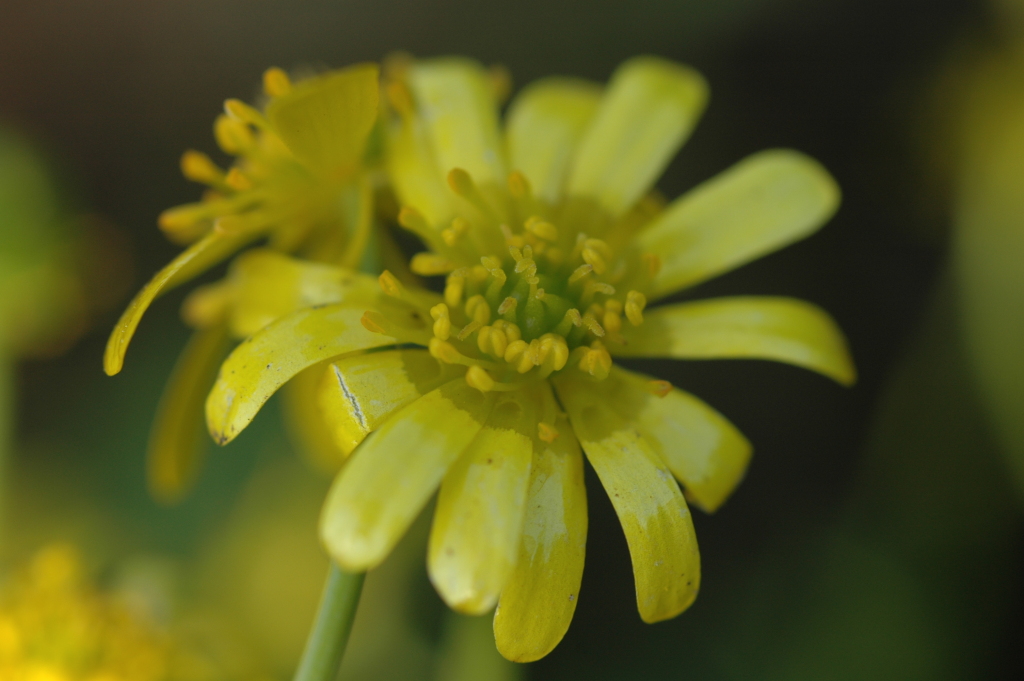Ranunculus amplus
N.G.Walsh & B.G.Briggs Lacy River ButtercupStoloniferous, aquatic or semi-aquatic perennial, to c. 50 cm high. Leaves both tufted at base and cauline; petioles to 45 cm long, glabrous; lamina palmatisect, c. orbicular in outline, 5–13 cm diam., with ultimate segments narrow-linear, 0.5-2 mm wide, glabrous. Flowering stems erect, exceeding leaves, usually 1–3-flowered; sepals 5, spreading, ovate to obovate, 3–6.5 mm long, glabrous or shortly ciliate near basal margin; petals 8–16, narrowly obovate to obovate, 5–13 mm long, 3–6 mm wide, yellow; nectary lobe free in upper quarter, obtuse to truncate, c. 1 mm long; stamens 20–45. Achenes 25–45, ±lenticular, 2–4 mm long, the sides smooth or somewhat warty, sometimes distinctly rippled; beak 0.5–1.3 mm long, straight or reflexed; receptacle shortly hirsute in the staminal zone, with scattered hairs between achenes. Flowers Oct.–Nov.
Wim, GleP, VVP, GipP, WaP, GGr, DunT, EGL, HSF. Also SA. Scattered throughout southern Victoria (Yarra Glen, Frankston area, Corner Inlet, Heart Morass near Sale, and an isolated occurrence along the Wonnangatta River), but most common in the south-west (Grampians, Portland area). Moslty on swamp margins, sometimes partially submerged, with leaves and inflorescences emergent.
Ranunculus amplus closely resembles R. inundatus, differing in being considerably larger in most respects. Typically, R. inundatus has leaves to 5 cm diam., up to 7 petals that are up to 7 mm long and achenes to 1.5 mm long.
 Spinning
Spinning

